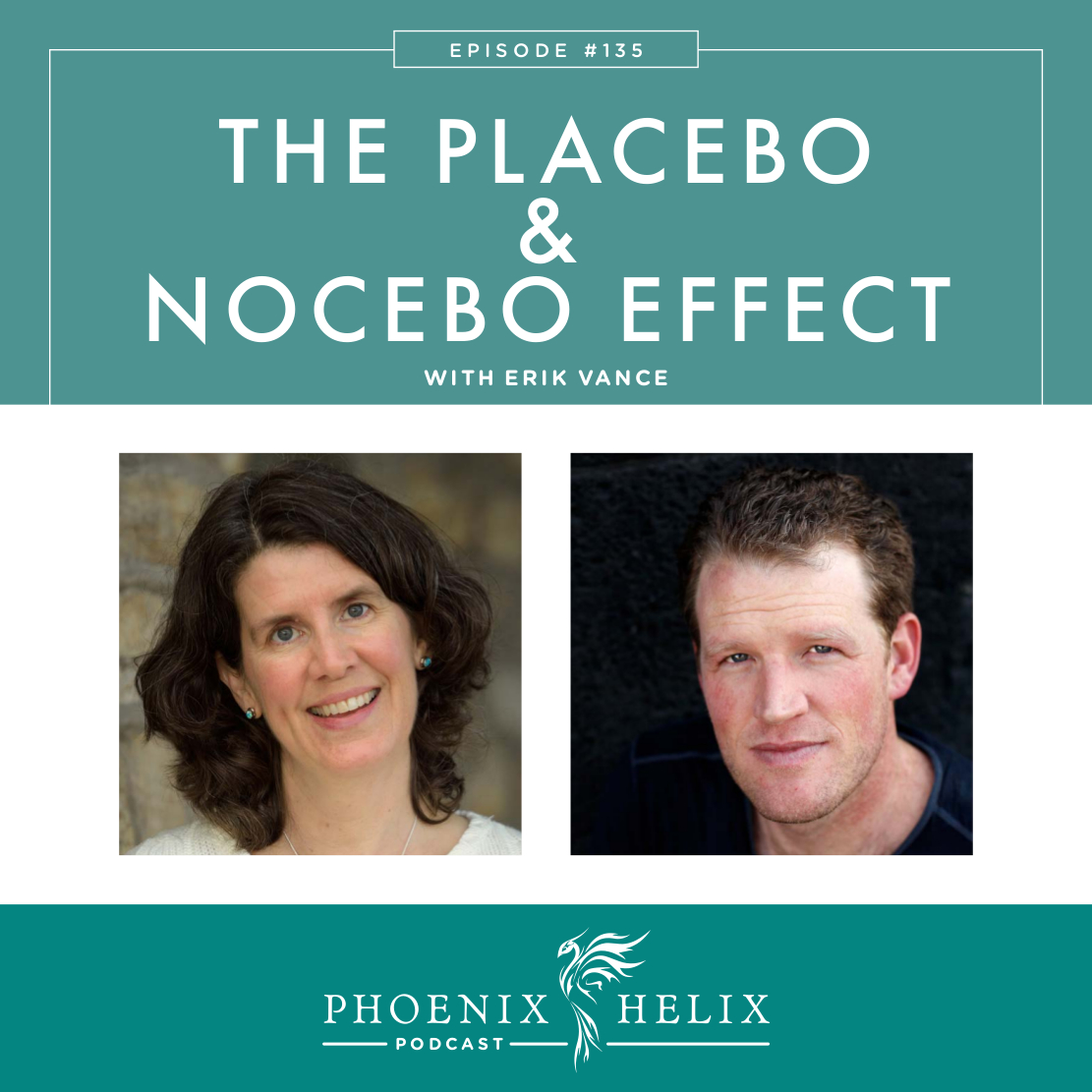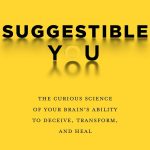The Amazing Power of the Mind
When you hear the word “placebo”, you might think “sugar pill” or “fake medicine”. When a new drug is tested in clinical trials, it has to outperform the placebo. What you may not know is that this is extremely hard to do! Not because the drugs do nothing, but because our brain, under the right circumstances, for the right people, can do some pretty amazing things. So, that’s the topic of our podcast today. What is the mysterious power of the placebo effect? How does it work? Is this something we can actively tap in our own lives? And what are its limits? My guest is Erik Vance, a science journalist and author of the book, Suggestible You.
Listen to the Show
- Subscribe to my podcast through your favorite podcast app: iTunes, Stitcher, Google, TuneIn, Spotify, Amazon, etc.
- You can also listen to the episode right here through the player below, and if you subscribe to my newsletter you’ll get notified of future episodes.
Podcast: Play in new window | Download
Show Notes
- Intro (0:00)
- Thank You to Our Podcast Sponsor: ShopAIP (2:05)
- Today, I’d like to highlight the line of products from ROOTS Tigernuts. Despite their name, tigernuts aren’t nuts at all. They’re a starchy tuber allowed on the AIP, and they’re incredibly versatile. ROOTS products include Tigernut Butter in 3 varieties (plain, carob, and honey cinnamon), Sticky Nosh “Granola” in 2 flavors (island coconut & pumpkin spice), Flatbread Pizza Crust Mix, and a Waffle and Pancake Mix.
- ShopAIP is an online store dedicated to the Paleo Autoimmune Protocol. With 300 items for the elimination phase of the AIP, and new products labeled by reintroduction category as well. You can find protein bars, sauces and condiments, AIP-friendly spices, cooking and baking ingredients, delicious snacks, non-toxic skincare, and more.
- If you’re a first-time customer, use the code PHOENIX for 10% off your order. Purchase here.
- Definition of Placebo (3:39)
- Over 100 years ago, scientists discovered that sometimes when a person is given a treatment that contains no active ingredient, they get better anyway. This is the placebo effect and there are many different types:
- Regression to the mean: When your body is already in a cycle of healing, and you just happen to take a pill or treatment at a point where your body was already starting to improve.
- Misreporting: Sometimes patients will say they are feeling better when they aren’t, either to please their doctors, or to try to convince themselves because they don’t want to be sick. Here there is no physiological change.
- Internal pharmacy: This is the placebo effect that intrigues Erik the most. When your body responds as if it is receiving an active treatment and there are physiological changes in your body.
- Over 100 years ago, scientists discovered that sometimes when a person is given a treatment that contains no active ingredient, they get better anyway. This is the placebo effect and there are many different types:
- History of Placebo Research (4:51)
- Placebos were initially used in academic research as controls to prove whether or not a drug was effective. But it wasn’t a requirement of drug manufacturing until 1962, when the thalidomide scare in Europe had a side effect of inspiring a new law in the United States. It required that all drugs outperform a placebo, setting a new gold standard and protocol for clinical trials that continues to this day. After that law was passed, over a thousand drugs were discovered to be ineffective and removed from the market.
- Initially, there was no real interest in studying the placebo effect itself. In fact, scientists tended to disrespect people who experienced this effect as being overly gullible. But the truth is, the placebo effect is part of human nature. Our beliefs do impact how our bodies feel. So, now there is placebo research. Scientists want to know how it works and how it can potentially be harnessed for our benefit.
- Resource: Journal of Interdisciplinary Placebo Studies.
- Unconscious (Conditioned) Placebos (9:41)
- There are two main types of placebos: conscious & unconscious.
- Unconscious placebos are often a result of conditioning your body to expect a certain physical effect, and your body then creates that effect on its own. For example, if you take headache medicine and feel immediate relief (before the pill has time to kick in), that’s a placebo effect based on your body’s experience that the pill is linked to pain relief. Instead of waiting, your brain immediately releases pain-killing chemicals (natural endogenous opioids that exist in your body). There’s a lot of research into this type of conditioning and there are many physical responses that can be conditioned, including immune responses.
- We often think of it in either/or terms – drugs vs. placebo, but the placebo effect can also amplify the effectiveness of a drug.
- Health Conditions That Respond Well to Placebos (12:57)
- The conditions that respond best to a placebo are ones that can benefit from your body’s internal pharmacy (i.e. opioids, endocannabinoids, dopamine, seratonin, etc.) When your body doesn’t have the building blocks for the solution, the effect is naturally more limited.
- Conditions that have a high rate of placebo response include pain, anxiety, depression, IBS, Parkinson’s, and possibly some autoimmune conditions.
- Conditions that have a low rate of placebo response include autism, OCD, and Alzheimer’s disease.
- However, even in conditions where placebo responses are higher, they don’t happen for everyone and research is new. We don’t know all the mechanisms involved. Also, placebo effects can cancel each other out – the same chemical might soothe one symptom while increasing another.
- Conscious (Belief) Placebos (15:47)
- These involve more storytelling, where the brain buys into the story surrounding the treatment and then creates the benefit based on that belief. For example, say there’s an exotic berry from a far away place that is said to have health benefits, and you take it and feel better. If there is no actual special health benefit to that berry, you’ve just experienced a conscious/belief-based placebo effect.
- This type of placebo isn’t limited to exotic berries. It’s the same type of placebo effect that occurs in most drug trials, and it can also occur in everything from conventional surgery to alternative medicine.
- The Temporary Nature of Placebos (17:22)
- One of the challenges of harnessing placebos is that their effect tends to be temporary. One goal of current placebo research is to try to find ways to make the effect last longer. Can we train our brain long-term to help us manage chronic health conditions?
- Placebos Can Be Powerful (19:40)
- Mike Pauletich had Parkinson’s disease and agreed to participate in a clinical trial which involved brain surgery. The goal was to inject a chemical into the brain that would restart dopamine production. It was a double-blind study with half the patients receiving the treatment and half receiving a sham surgery. 2 years later, they unblinded the study and looked at the results. There was no difference in improvement between the treatment group and the placebo group. But that didn’t mean no one improved. For some patients like Mike, the results were dramatic. He went from having problems walking to running a triathlon. Unknown to Mike, he was in the placebo group. (Details of this story and others are included in Erik’s book, Suggestible You.)
- The more invasive the procedure, the stronger the placebo effect seems to be. So, injections have a higher placebo response than pills, and surgery has the highest placebo response of all.
- And there’s some fascinating research currently being done on open placebos: where the patient is told they are taking a placebo and it still works.
- Ethics of Placebos (24:09)
- If a treatment doesn’t outperform the placebo, should it still be offered if there is no other effective treatment available, and the placebo effect can’t be accessed any other way?
- There is a law requiring drugs to prove they can outperform a placebo, but it doesn’t apply to surgery or devices. Therefore, many surgeries are still being offered that don’t outperform sham surgery.
- Also, blinded placebo effects do tend to be stronger than open placebo effects. Is it unethical to lie to patients, or try to encourage the placebo response through the power of storytelling?
- It’s an area of debate and people differ in their opinions.
- What Strengthens the Placebo Effect? (26:16)
- Performance/storytelling – the theater and ritual surrounding a treatment. The bigger the performance, the bigger the placebo effect. This can be true in shamanic healing, but also a medical setting.
- Active placebos are stronger than passive placebos. With active placebos the patient experiences something when they take it. It might be a pill that makes your tongue tingle, or the sting of a needle, or the scent of incense at a ritual, etc.
- The power of groups – Group healing is an ancient human tradition for good reason. Placebo research is showing that even just telling someone how others have responded increases the patient’s placebo response. And the chemicals we release when surrounded by a social group (oxytocin and vasopressin) can amplify the placebo effect when administered in a clinical setting.
- While the placebo effect can be seen and studied in the lab, it’s never as powerful as that effect in a real-life setting, embedded in culture, community, and a multi-faceted experience.
- The Variability of the Placebo Response (33:36)
- The placebo response varies between different countries and cultures. Some countries respond better to pills, others to injections, others to suppositories. And the percentage of people who have a placebo response varies by country and culture as well.
- Colors also make a difference. Drug manufacturers put a lot of thought into the shape and color of their pills.
- And individual response varies as well. You might have a placebo response one day and not another day. Unlike hypnosis where the effects are long-lasting.
- Thank You to Our Podcast Sponsor – Paleo on the Go (36:06)
- A frozen meal delivery service, 100% of their menu is compliant with the elimination phase of the paleo autoimmune protocol (AIP). They have over 5o items, including entrees, side dishes, broth, AIP-friendly bacon, and desserts.
- Use the code PHOENIX for 10% off your first order.
- Placebo Controlled Dose Reduction (38:03)
- This is when a placebo is combined with a prescription medication, and the patient is aware of it. The goal is to access the body’s conditioned response to the drug, and eventually transfer that response to the placebo. This allows you to lower the dose, maximize the benefit, and minimize potential side effects.
- Note: Don’t try this at home. The conditioning protocol is very specific, and not everyone gets a placebo response. Research is still very new. Always work with your doctor when attempting medication changes.
- Research Studies:
- The Nocebo Effect (43:18)
- This is the opposite of a placebo, but the mechanisms are similar. A placebo is a positive response based on conditioning or expectation, whereas a nocebo is a negative response. For example, in placebo-controlled drug trials, some people in the placebo group will experience side effects associated with the active drug, even though they’re not taking that drug. Similarly, if someone tells you something is going to hurt, your pain experience will often increase based at that expectation.
- The nocebo effect is hard to study due to ethics – you don’t want to worsen someone’s medical condition. But in labs they have been able to study it in relation to pain, and it appears that nocebos are easier to create than placebos, they last longer, and they come back more easily. It’s part of our brain’s negativity bias.
- Placebo Genes (47:09)
- One of the mysteries of the placebo effect is that it’s hard to predict and therefore harness or control. But new research is emerging that identifies gene variations that make people more prone to the placebo effect. They are genes that regulate the brain’s internal pharmacy. The catch is that it’s complex. Every person has a unique gene combination, and some “placebo genes” work well together, while others might cancel each other out. However, it is a fascinating area with great potential for future understanding of this response.
- Resource: Genetics and the Placebo Effect: the Placebome.
- The Limits of the Placebo Effect (51:25)
- As we mentioned earlier in the podcast, some conditions seem to respond very well to the placebo effect whereas others don’t. Generally speaking, symptoms seem to be within the realm of placebo response, but cures aren’t. Especially since the placebo effect is usually temporary. For example, with cancer the placebo effect often helps reduce symptoms (such as pain and nausea) but very rarely does it shrink tumors.
- Erik’s rules for experimenting with placebos:
- Don’t hurt yourself – If you have a serious medical condition, don’t forego conventional medical treatment. You can use placebos to complement and enhance medicine, but it can be very dangerous to think your mind can replace medicine altogether.
- Don’t hurt your pocketbook – Many people ruin their finances pursuing purported miracle cures that are simply placebos.
- Don’t hurt the planet – Many placebo-based “cures” are made from endangered plants or animals.
- Eileen’s List of How to Harness the Placebo Effect (54:16)
- Choose healthcare practitioners you trust, who show a caring demeanor.
- Ask other people you trust what has worked for them. (Peer effect).
- Activate your placebo with conditioning. Smell, sound, taste, location.
- Create a ritual around your healing practice.
- Work to counteract your own negativity bias to minimize nocebo effects. (Work through your fears.)
- Be aware of the limits. Placebos don’t cure autoimmune disease, so don’t turn down treatment that can help you. However, placebos can make other treatments more effective and also ease symptoms.
- Outro (56:44)
- Erik Vance’s book is called Suggestible You. He’s also a science journalist and writes for National Geographic, Nature, Scientific American, the New York Times, and more. You can keep up with his work through his website. He’s also active on Twitter.
- Eileen (your podcast host) is the author of multiple books, written to help people thrive with autoimmune disease. Learn more on the Books Page.
- If you like this podcast, follow or subscribe through your favorite podcast app. You can also subscribe to Eileen’s biweekly newsletter.
- Check out the entire archive of podcast episodes.
You May Also Be Interested In
Spreading the Word
If you like the podcast, please leave a positive review in iTunes. It would mean the world to me, and also helps others find the podcast. Here are some quick instructions using your iPhone:
- If you are already subscribed to my podcast: (1) Click the purple podcast icon. (2) At the bottom of the screen, click Library. (3) At the top of the screen, click Shows. (4) Click the Phoenix Helix podcast image. (5) Scroll down the page, and you’ll see Ratings and Reviews. Scroll down a little bit more and click on Write a Review. This will bring up the review screen. Tap 5 stars (if you love the podcast), and then click in the title box, and it will bring up the keyboard. Enter a title and short review. (6) Click Send in the upper right corner. (7) Thank you! Positive reviews give the podcast a higher search ranking in iTunes, helping people find it and letting them know it’s a quality podcast and worth their time to listen.
- If you haven’t subscribed to my podcast: (1) Click the purple podcast icon. (2) In the lower right corner, click the magnifying class. (3) Type Phoenix Helix in the search box. (4) Click the podcast cover in the Show list. (5) If you’d like to subscribe, click the + sign at the top of the screen. (6) To write a review, scroll down the page, and you’ll see Ratings and Reviews. Scroll down a little bit more and click on Write a Review. This will bring up the review screen. Tap 5 stars (if you love the podcast), and then click in the title box, and it will bring up the keyboard. Enter a title and short review. (7) Click Send in the upper right corner. (8) Thank you! Positive reviews give the podcast a higher search ranking in iTunes, helping people find it and letting them know it’s a quality podcast and worth their time to listen.








